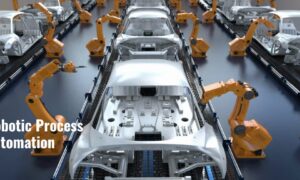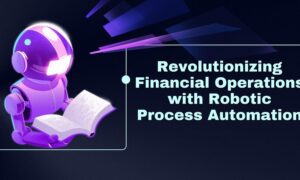What is RPA?
Robotic process automation (RPA) is a form of business process automation technology based on software robots or artificial intelligence (AI) workers.
RPA tools can automate data entry, rule-based processes, and repetitive tasks across multiple applications just like a human user would, but without the need for human intervention. This allows businesses to boost efficiency and productivity while reducing errors, cycle times, and costs.
While RPA is often thought of as a “set it and forget it” solution that doesn’t require much maintenance or management after implementation, the reality is that RPA solutions need to be monitored and managed just like any other enterprise software application.
Read: Consumer Trends Influencing the Growing Popularity of Robotic process automation.
There are many benefits of RPA for businesses. One benefit is that it can help to improve efficiency and accuracy in data entry and other processes. RPA can also help to reduce costs associated with manual labor since robots can do the work more cheaply than humans. Additionally, RPA can free up employees’ time so they can focus on more high-value tasks, and it can help to improve compliance with regulations.
Companies want robot process automation to manage complex unstructured data, and automate all business operations from start to finish. RPA is being integrated with cognitive and artificial intelligence technologies by companies to expand the range of business process automation. Market growth is expected to be boosted by factors such as the necessity to optimize operations to improve productivity and maximize return. Integration of the most up-to-date technologies and changing business processes across businesses are also key.
Reduced paperwork is one of RPA’s most anticipated future trends, and RPA is seeing the rise of intelligent bots for online data extraction, processing, and filing.
Suggested Reading: “New Automation and Control System in Healthcare: How It Can Benefit You”
Factors Important for Drivers
RPA Capabilities are Boosted By the Increased Adoption of Advanced Technologies, such as Al, Cloud, and Machine Learning. Organizations are looking for solutions to manage complex data and information which is why Al and cloud-based RPA solutions are being developed by companies.
These are some restraining factors:
The industry growth is likely to be limited by companies’ reluctance to move from manual processes to automated ones. RPA solutions are being explored by businesses around the globe. But, the lack of knowledge regarding the technology can be a barrier to adoption. RPA solutions will be implemented in the organizations of professional service providers within two to three years.
To use robotic process automation technology effectively, companies must invest in reliable infrastructure and highly skilled personnel. It can be costly and complicated to build RPA infrastructure and train and educate existing personnel.
KEY INDUSTRY DEVELOPMENTS:
Automation Anywhere Inc. launched May 2021 cloud-based robotics process automation solution to boost industrial robots, and in July 2020, Nice Systems Ltd. partnered with Minit in an effort to accelerate investment returns by automating discovery accuracy. Combining the two companies allowed for faster automation and interactive processes, which in turn benefited the operation.
October 2019- Automation Anywhere, Inc. To accelerate global adoption, we launched an Al-based RPA as a Service platform.
How can RPA be used?
Robotic process automation can be used in a number of ways to help businesses automate their processes. One way is by using RPA to automate the data entry process. This can help reduce the amount of time it takes to input data into the system, as well as improve accuracy by eliminating human error. Additionally, RPA can be used to generate reports or create presentations automatically. This can save businesses time and money by not having to hire someone to do these tasks manually. Finally, RPA can be used to monitor and enforce compliance with company policies and procedures. This can help ensure that employees are following the correct procedures and help prevent errors from occurring.
Final Take
Robotic process automation (RPA) can be a great addition to any business, but it’s important to understand the limitations of the technology before implementing it. RPA is best suited for tasks that are well-defined and rules-based, and it can automate high-volume, repetitive processes.
However, RPA is not a silver bullet. It’s important to consider whether a task is suitable for automation before implementing an RPA solution. Tasks that require creativity or judgment are not good candidates for RPA. In addition, RPA can’t handle unstructured data or processes that change frequently.
Before implementing RPA, businesses should first identify which processes would benefit from automation and then map out the potential risks and benefits of each solution.



































